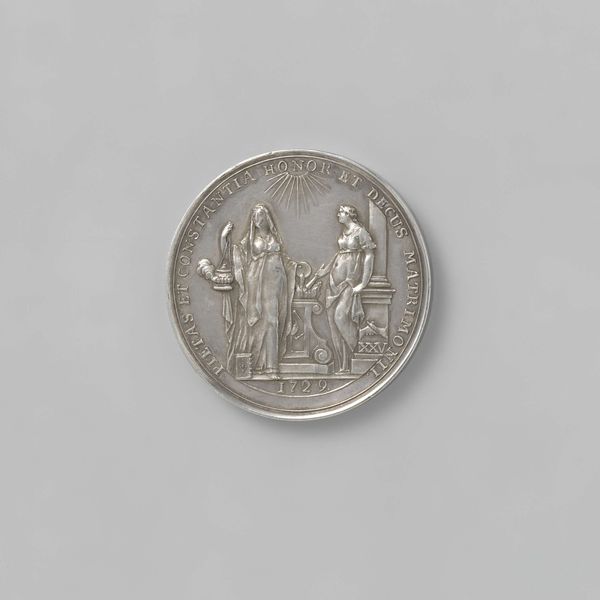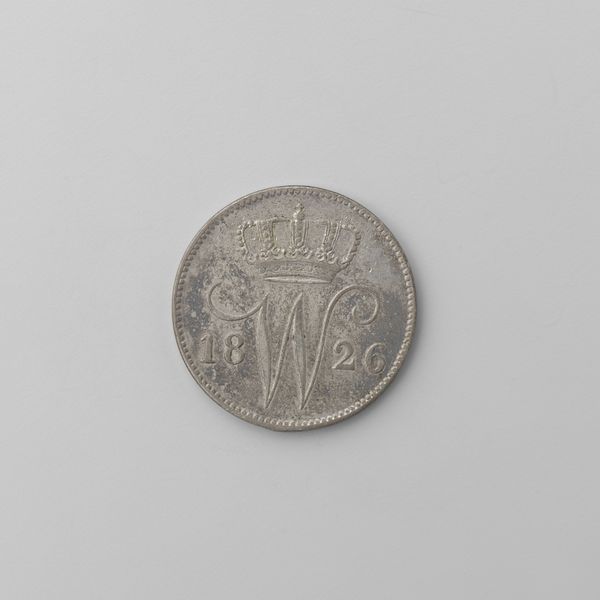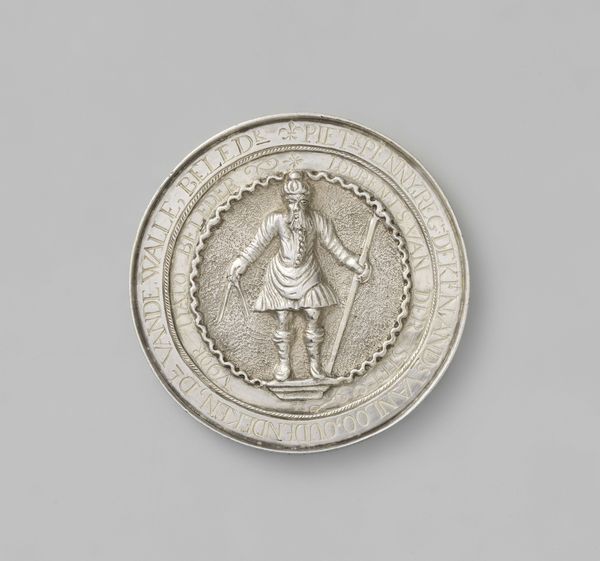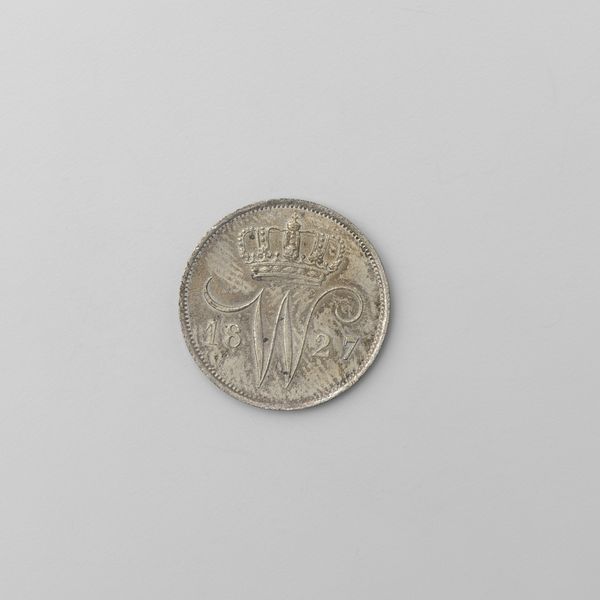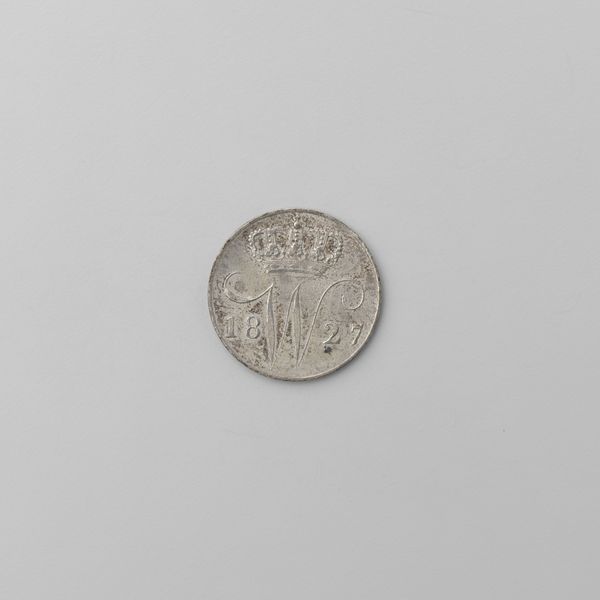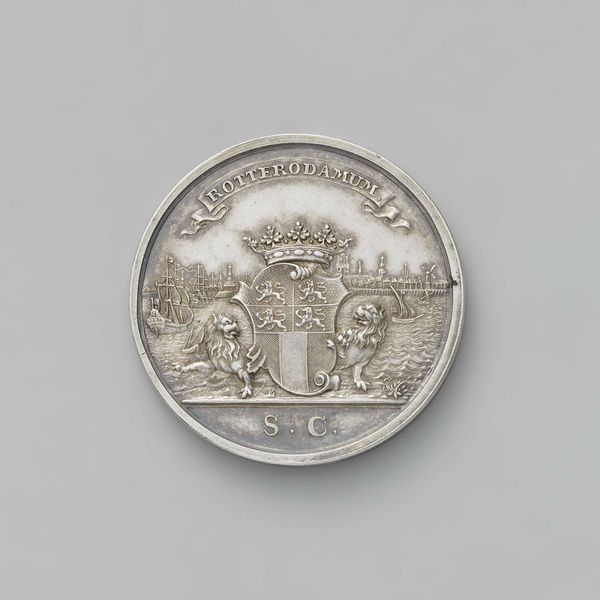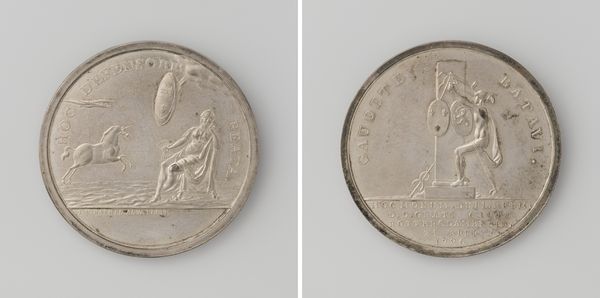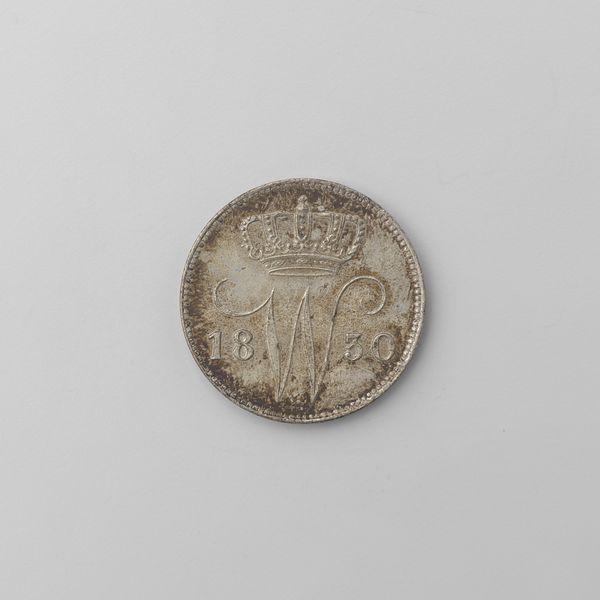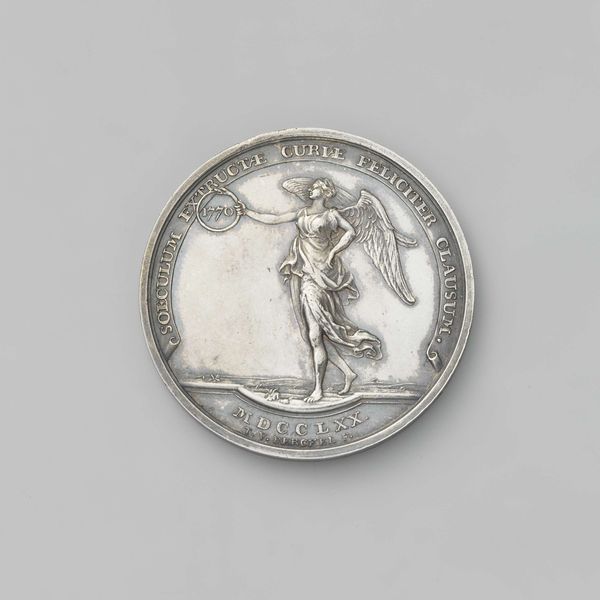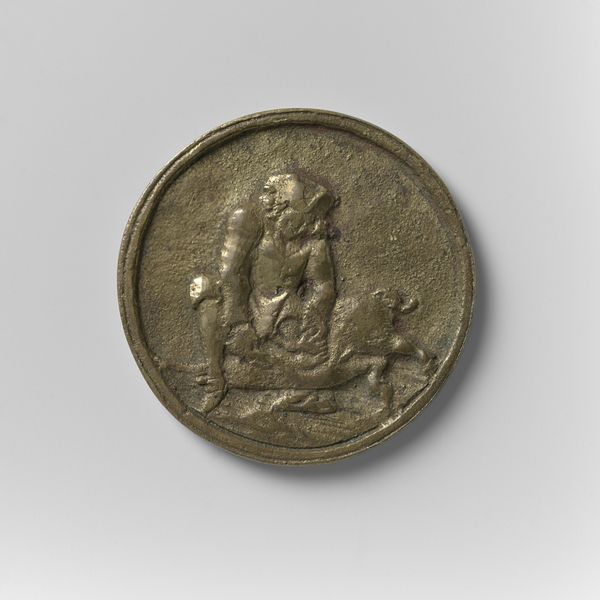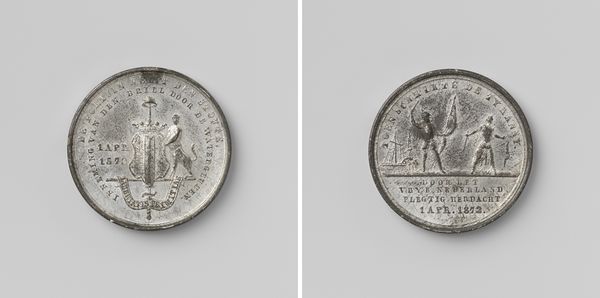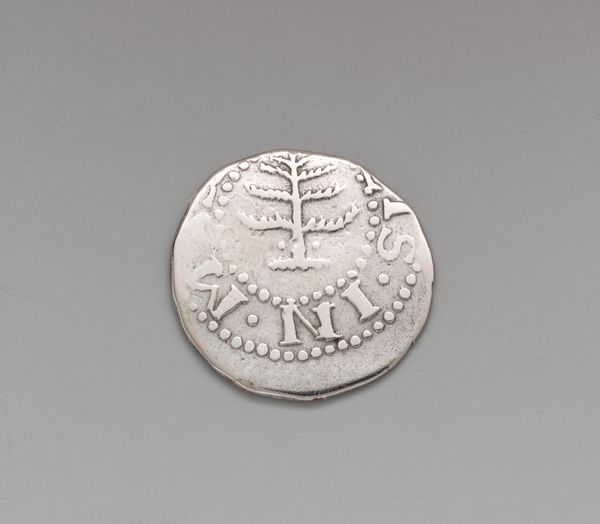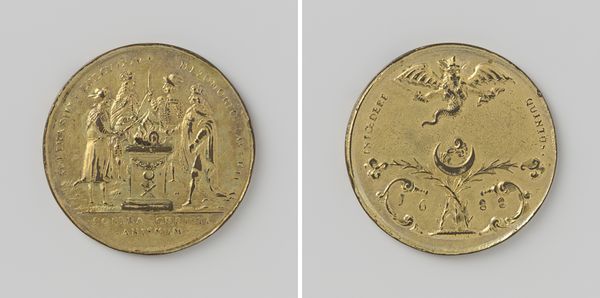
Dimensions: diameter 4.6 cm, weight 373 gr
Copyright: Rijks Museum: Open Domain
Editor: This silver relief from 1777, titled "Slepersgilde van Amsterdam," depicts a horse-drawn carriage and commemorates Isaak Winckelman. I'm struck by its delicate detail, almost like a miniature world frozen in time. What can you tell me about the symbolism in this piece? Curator: Indeed. What immediately jumps out is the imagery of transportation and conveyance, especially given its historical context. The "Slepersgilde," or Haulers' Guild, played a vital role in the economic infrastructure of Amsterdam, moving goods and people. What emotional weight might a carriage hold beyond mere transportation? Editor: I suppose it represents status and connection. People being moved *in* carriages aren’t the ones working in the mud! Also the movement of trade throughout the region. Curator: Precisely. Think of the cultural memory embedded in the image of a guild: collaboration, expertise, societal order, and collective prosperity. Notice how the horse itself is depicted. What values might the symbol of a horse represent in Dutch culture? Editor: I guess power and luxury… like, wealth in motion? It's interesting how a simple image becomes loaded with layers of meaning. Curator: And it continues, doesn’t it? Each component speaks to its moment, but also resonates through history. This isn't just a historical scene; it’s an embodiment of civic pride and economic vitality, memorialized for future generations. How does considering this alter your initial feeling about the piece? Editor: It goes beyond the 'delicate' craftsmanship I initially noticed, it’s almost propaganda for guilds in the 18th century. I'll definitely be thinking more about this tension between artistic expression and symbolic meaning now! Curator: Excellent. Remembering that images accrue meaning helps us truly *see* history.
Comments
No comments
Be the first to comment and join the conversation on the ultimate creative platform.
